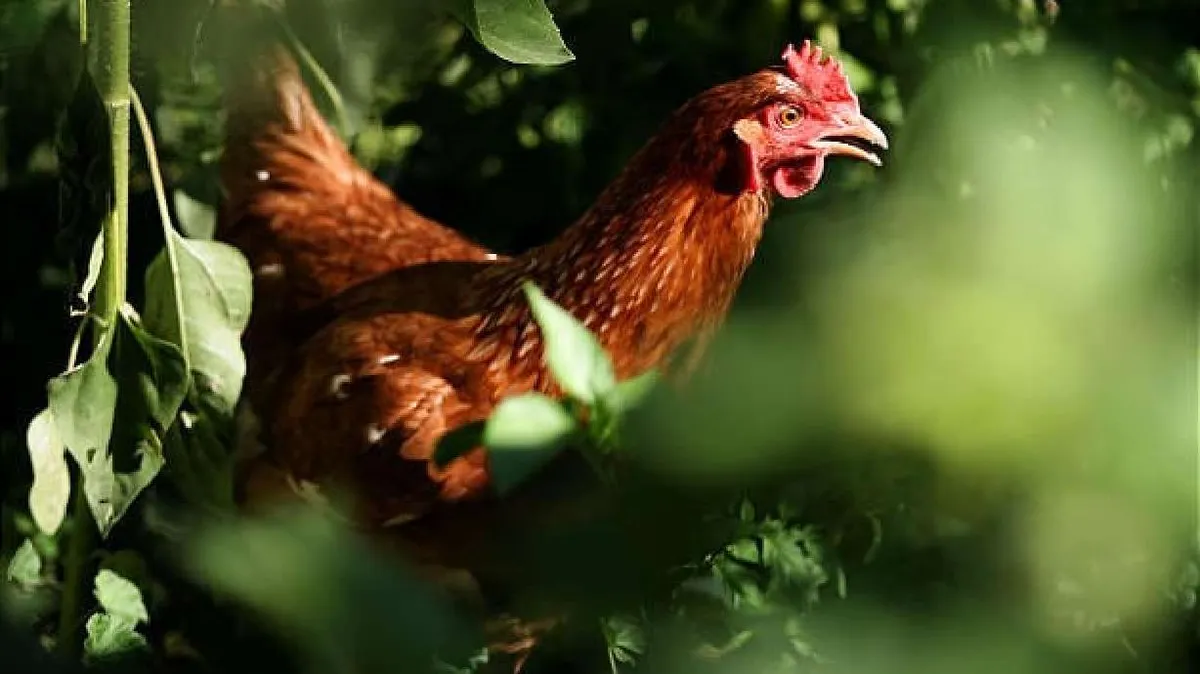
SALT LAKE CITY — As the popularity of keeping backyard and urban chicken flocks continues to rise, health and agriculture experts are issuing warnings about the potential risks of bird flu to both your feathered friends and yourself.
Although estimates vary, a significant number of people now keep backyard chickens. According to a 2023 survey by the American Pet Products Association, approximately 13% of households have backyard chickens, a trend especially popular among millennials and Gen Z. Baltimore Magazine suggests that close to 12 million people in the U.S. have backyard chickens.
Health and agriculture officials stress the importance of taking steps to keep your flock healthy. Highly pathogenic avian influenza, including the H5N1 strain, has been confirmed in various U.S. regions, affecting some backyard flocks. This form of bird flu is highly contagious.
Wild birds are often carriers of bird flu, and other animals typically become infected through encounters with these infected wild birds. According to the Centers for Disease Control and Prevention (CDC), while human infections from backyard flocks are rare, they can occur through direct contact. Infected birds may appear healthy but can still spread the virus.
People may contract the virus by touching contaminated surfaces or inhaling droplets spread by birds through actions like flapping wings or scratching. However, the CDC notes that no cases of human infection have been reported from handling properly cooked poultry or poultry products.
Infected flocks may experience sudden death, low energy, poor appetite, purple discoloration, decreased egg production, malformed eggs, nasal discharge, coughing, lack of coordination, and diarrhea, according to the American Veterinary Medical Association.
The CDC recommends several measures for backyard flock owners to minimize risk:
Avoid touching sick or dead birds, droppings, or water sources without wearing personal protective equipment (PPE). Use safety goggles, an N95 mask, disposable gloves, and fluid-resistant coveralls and boots when around sick or dead birds. Avoid touching your eyes, nose, or mouth. Remove and dispose of protective gear properly, washing hands thoroughly afterward. Disinfect reusable items with an Environmental Protection Agency-approved disinfectant effective against influenza A viruses.Wash clothing in hot water and detergent, dry on high heat, and take a shower immediately. Monitor your health for 10 days following exposure to potentially infected birds or contaminated materials.
Outdoor cats and dogs may also be at risk if they encounter sick or dead birds, including those near your backyard flock. Prevention includes keeping pets away from wild birds and poultry. Symptoms in pets can include fever, lethargy, poor appetite, eye inflammation, nasal discharge, difficulty breathing, and neurological signs like tremors or poor coordination.
The American Veterinary Medical Association advises against feeding pets raw meat, poultry, or milk.